Tennis
What Are The Basic Rules of Tennis?
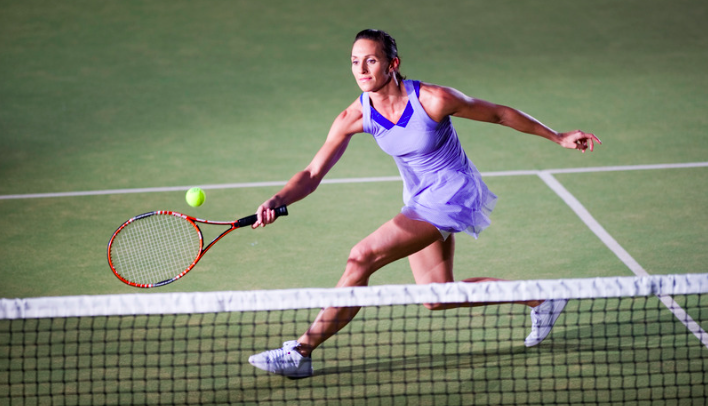
What Are The Basic Rules of Tennis?
Tennis, a dynamic and exhilarating sport enjoyed by millions around the world, combines athleticism, strategy, and precision. Whether played casually with friends or competitively on professional courts, tennis offers an engaging and rewarding experience for participants of all ages and skill levels. To fully appreciate the game and participate effectively, it’s essential to grasp the basic rules that govern each match.
From scoring points to serving and rallying, mastering these fundamental principles lays the foundation for an enjoyable and competitive tennis experience. In this guide, we’ll delve into the essential rules of tennis, providing clarity and insight into the mechanics that shape every exhilarating rally and match.
Scoring in Tennis: Unraveling the Game
Scoring in tennis is more than just tallying points; it’s a nuanced system that adds layers of strategy and excitement to the game. Let’s break down the scoring system into its essential components to better understand the rhythm and flow of a tennis match.
1. Love All: The Beginning of the Game
At the start of a tennis match, the score is always announced as “Love All.” In tennis terminology, “Love” signifies zero. This clean slate sets the stage for the competition that is about to unfold.
2. The 15-30-40 Progression:
As the game progresses, points are scored and tallied in a distinctive sequence. Players earn points in increments of 15, starting from Love (0), then 15, 30, and finally 40. But why 40 instead of 45? This unique scoring tradition dates back centuries and adds to the sport’s rich heritage.
3. The Crucial Point of Deuce:
When both players or teams reach a score of 40 points each, it’s known as “deuce.” Here, the game hangs in the balance, requiring a two-point advantage to secure victory. From deuce, the next point won gives the player or team “advantage,” putting them one step closer to winning the game.
4. Securing the Game:
To clinch a game, a player or team must reach 40 points and then win the subsequent point, sealing victory with a two-point lead. This can be achieved through a combination of skillful shots, strategic maneuvers, and mental resilience.
5. Sets and Matches:
In tennis matches, players compete not just for games but also for sets and ultimately the entire match. A set consists of a series of games, usually requiring six games to win, with a two-game lead. The player or team that wins the majority of sets emerges victorious in the match, marking the culmination of their efforts on the court.
Understanding the intricacies of scoring in tennis adds depth to the game, elevating it from a simple contest of skill to a strategic battle of wits and endurance. Whether it’s the tension of deuce or the exhilaration of securing a game, each point won brings players closer to their ultimate goal of triumph.
Serving in Tennis: The Gateway to the Game

Serving is a fundamental aspect of tennis, serving as the gateway to initiating gameplay and setting the tone for each point. Let’s delve into the intricacies of serving, exploring its rules, techniques, and strategic significance on the court.
1. The Serve: An Essential Start
At the beginning of each point, one player has the privilege and responsibility of serving the ball to their opponent. The serve launches the point into action, dictating the pace and direction of play from the outset.
2. Alternating Serves:
In tennis, serving alternates between players or teams at the start of each game and switches after every odd game in a set. This rotation ensures fairness and equal opportunities for both competitors throughout the match.
3. Serving Mechanics:
Proper serving technique is crucial for accuracy, power, and consistency. Players must stand behind the baseline, within the confines of the service box, before executing their serve. From this position, they must deliver the ball diagonally across the net into the opponent’s service box.
4. Two Attempts:
Players are allowed two attempts to successfully serve the ball into the opponent’s service box. If they fail to do so on the first attempt, they are granted a second serve. However, if they miss both attempts, it results in a “double fault,” resulting in the loss of the point to their opponent.
5. Strategic Advantage:
Serving provides players with a strategic advantage, allowing them to dictate play and control the tempo of the match. A well-placed serve can set up an advantageous position for the server, putting pressure on their opponent from the outset.
6. Variations and Tactics:
Experienced players employ a variety of serves, including flat serves, slice serves, and kick serves, to keep their opponents guessing and maintain a tactical edge. By mixing up their serves and targeting different areas of the service box, players can keep their opponents off balance and enhance their chances of success.
7. Momentum Shifts:
Effective serving can swing the momentum of a match in favor of the server, providing them with confidence and momentum as they strive to secure victory. Conversely, a strong return of serve can shift momentum in favor of the receiver, turning the tables on their opponent.
Serving in tennis is more than just a formality; it’s a strategic art form that can make all the difference between victory and defeat. Mastering the serve requires precision, power, and finesse, making it an essential skill for players at all levels of the game.
Return of Serve: The Counterattack Strategy
In tennis, the return of serve is the pivotal moment when the receiver responds to the server’s opening shot. It’s a critical phase of the game that can dictate the flow of play and determine the outcome of a point. Let’s explore the return of serve and its strategic importance on the court.
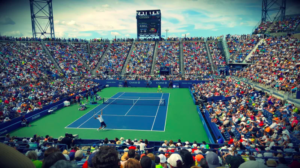
1. Reacting to the Serve:
The return of serve requires quick reflexes, keen anticipation, and precise timing. As the server sends the ball across the net, the receiver must assess its speed, trajectory, and spin to prepare for an effective return.
2. Placement and Depth:
A well-executed return of serve aims to neutralize the server’s advantage and gain control of the point. Players often focus on placing their return deep into the opponent’s court, near the baseline, to limit the server’s options and disrupt their rhythm.
3. Offensive vs. Defensive Returns:
Players have the option to adopt either an offensive or defensive approach to their return of serve, depending on the situation. An offensive return aims to put pressure on the server by hitting an aggressive shot, such as a deep groundstroke or a powerful winner. Conversely, a defensive return focuses on consistency and placement, aiming to keep the ball in play and force the server to make the next move.
4. Adaptability and Variation:
Experienced players possess a repertoire of return strategies, including chip-and-charge, slice, topspin, and flat returns, to keep their opponents guessing and exploit weaknesses in the server’s game. By varying their returns and adjusting to different serve styles, players can maintain a tactical edge and increase their chances of success.
5. Mental Toughness:
The return of serve is not only a physical skill but also a mental challenge. It requires focus, composure, and confidence to execute a successful return under pressure, especially against formidable servers. Mental preparation, visualization, and positive self-talk can help players overcome nerves and perform at their best when returning serve.
6. Seizing Momentum:
A well-executed return of serve can shift momentum in favor of the receiver, demoralizing the server and energizing the returner. By capitalizing on opportunities to break serve or create openings for winners, players can gain control of the match and swing the momentum in their favor.
7. Continuous Improvement:
Improving the return of serve is an ongoing process that requires practice, observation, and adaptation. Analyzing opponents’ serve patterns, honing stroke technique, and refining footwork can enhance a player’s ability to return serve effectively and elevate their overall game.
The return of serve is a dynamic aspect of tennis that demands skill, strategy, and mental fortitude. By mastering this essential skill, players can level the playing field, turn defense into offense, and increase their chances of success on the court.
Rallying in Tennis: The Art of Sustained Exchange
Rallying is the heart and soul of tennis, encompassing the prolonged exchanges between players as they engage in a back-and-forth battle of skill and strategy. It’s during these rallies that players showcase their agility, precision, and endurance, captivating audiences with every stroke.
1. Establishing Rhythm:
Rallying begins once the serve has been returned, and players settle into a rhythmic exchange of shots. Each stroke, whether it’s a forehand, backhand, volley, or overhead smash, contributes to the flow of the rally, as players maneuver to gain the upper hand.
2. Shot Selection and Placement:
During a rally, players must assess their positioning, anticipate their opponent’s shots, and select the most appropriate stroke for each situation. Strategic shot placement, aiming for the corners, sidelines, and angles of the court, can create openings and put pressure on the opponent.
3. Adaptability and Versatility:
Successful rallying requires adaptability and versatility, as players must adjust their tactics in response to changing circumstances. They may need to vary the pace, spin, and trajectory of their shots, mixing in slices, topspins, and lobs to keep their opponent off balance and maintain control of the rally.
4. Footwork and Movement:
Footwork is essential in rallying, as players must move efficiently and quickly around the court to reach each incoming shot. Proper positioning, balance, and anticipation allow players to execute their strokes effectively and cover the court with agility.
5. Consistency and Patience:
Consistency is key in rallying, as players aim to keep the ball in play and force errors from their opponent. Patience is also vital, as players may need to engage in extended rallies, waiting for opportunities to capitalize on openings or weaknesses in their opponent’s game.
6. Building Momentum:
Rallies often serve as momentum builders, with each successful shot or defensive play bolstering the confidence and energy of the player. A string of well-executed shots can shift momentum in favor of one player, putting pressure on their opponent and tilting the balance of the match.
7. Mental Toughness:
Rallying is not only a physical test but also a mental one, requiring focus, concentration, and resilience. Players must maintain their composure under pressure, overcome mistakes, and stay mentally sharp throughout the course of a rally, no matter how grueling it may become.
Rallying embodies the essence of tennis, showcasing the athleticism, skill, and competitive spirit of the players. Whether it’s a lightning-fast exchange at the net or a protracted baseline battle, each rally adds to the drama and excitement of the game, leaving fans and players alike captivated by its intensity.
Scoring Points in Tennis: The Path to Victory
In tennis, scoring points is the primary objective, as players strive to outmaneuver their opponents and accumulate points to win games, sets, and ultimately, matches. Understanding the scoring system is essential for players to track progress, strategize effectively, and ultimately emerge victorious on the court.
1. Love, 15, 30, 40: The Scoring Sequence
The scoring sequence in tennis follows a unique progression, with points awarded in increments of 15. The score starts at “Love” (0) and advances to 15, 30, and finally 40. When a player scores their fourth point, they win the game. However, if both players reach 40 points, it’s called “deuce,” and one player must win by two consecutive points to secure the game.
2. Winning Games: The 4-Point Rule
To win a game, a player must reach four points with a two-point lead over their opponent. This can be achieved by winning points consecutively or capitalizing on deuce and advantage situations. Once a player reaches four points and maintains a two-point lead, they win the game and earn a valuable point in the overall match.
3. Sets and Matches: The Long-Term Goal
In tennis matches, players compete not just for individual games but also for sets and matches. A set typically consists of six games, and the player or team that wins the majority of sets wins the match. Sets may require a two-game lead or may extend to a tiebreaker if the score becomes tied at a certain point. Winning sets requires consistent performance and strategic play to outmaneuver the opponent over the course of multiple games.
4. Strategic Considerations: Tactics and Timing
Scoring points in tennis involves a combination of skillful shot-making, tactical positioning, and mental fortitude. Players must assess their opponent’s strengths and weaknesses, adapt their strategy accordingly, and seize opportunities to gain the upper hand during rallies. Timing is also crucial, as players must strike the ball with precision and anticipation to outmaneuver their opponent and win crucial points.
5. Momentum Shifts: The Ebb and Flow
Scoring points in tennis often leads to shifts in momentum, as players gain confidence from successful shots and capitalize on opportunities to gain the upper hand. Momentum swings can occur rapidly during matches, with players riding waves of success or overcoming setbacks to regain control of the game. Recognizing and harnessing momentum shifts can be a key factor in determining the outcome of a match.
Scoring points in tennis is not just about tallying numbers on the scoreboard; it’s a dynamic process that requires skill, strategy, and mental resilience. By mastering the scoring system, players can navigate the complexities of the game, outmaneuver their opponents, and emerge victorious on the court.
Changeovers in Tennis: Brief Reprieves and Strategic Resets
Changeovers in tennis are brief interludes between games and sets that provide players with essential opportunities to rest, regroup, and refocus. Despite their brevity, changeovers play a crucial role in the rhythm and flow of a match, offering players strategic advantages and psychological boosts.
1. Physical Recovery: Restoring Energy and Hydration
One of the primary purposes of changeovers is to allow players to replenish their energy reserves and stay hydrated during intense matches. Players often utilize this time to drink water or sports drinks, consume snacks for quick energy, and catch their breath after grueling rallies.
2. Mental Reset: Regaining Focus and Composure
Changeovers serve as mental reset buttons, allowing players to regroup and refocus their attention on the task at hand. Whether they’re trailing in a set or maintaining a lead, changeovers provide players with the opportunity to assess their performance, adjust their strategy, and psych themselves up for the next phase of the match.
3. Coaching Consultations: Strategic Discussions and Advice
In some tennis matches, players are permitted to receive coaching advice during changeovers. Coaches offer valuable insights, tactical adjustments, and motivational encouragement to help their players overcome challenges and capitalize on opportunities. These coaching consultations can be instrumental in turning the tide of a match and guiding players to victory.
4. Equipment Maintenance: Addressing Gear and Attire
Changeovers also provide players with the chance to address any equipment issues or adjust their attire as needed. Players may change sweat-soaked shirts or adjust their grip on their racket to maintain optimal performance during the match. Ensuring that equipment is in top condition can help players feel comfortable and confident on the court.
5. Psychological Edge: Seizing Momentum and Confidence
Changeovers can have a profound psychological impact on players, influencing their mindset and momentum. A well-timed changeover can disrupt an opponent’s rhythm, halt their momentum, and shift the psychological momentum in favor of the other player. Conversely, a player who effectively utilizes changeovers to regroup and refocus can gain a psychological edge over their opponent, instilling confidence and determination.
6. Spectator Engagement: Intensifying Drama and Anticipation
Changeovers also serve as moments of heightened drama and anticipation for spectators, who eagerly await the resumption of play and the unfolding of the match’s narrative. It’s during these brief breaks that fans engage in animated discussions, analyze the action, and anticipate the outcome of the match, adding to the overall excitement and atmosphere of the event.
Changeovers in tennis are not merely pauses in the action; they are strategic intervals that can influence the course of a match and shape its ultimate outcome. By leveraging changeovers effectively, players can maximize their physical and mental preparedness, seize tactical advantages, and elevate their performance on the court.
Winning a Set and Match in Tennis: The Ultimate Goal
In tennis, the journey towards victory culminates in winning sets and matches, marking the culmination of skill, strategy, and resilience displayed by players on the court. Understanding the process of winning sets and matches is essential for players to navigate the complexities of the game and emerge triumphant.
1. Sets: Building Blocks of Victory
A set in tennis represents a series of games played to determine a winner. Traditionally, a set is won by the player or team who first reaches six games, with a two-game lead over their opponent. However, if the score becomes tied at six games apiece, a tiebreaker is often used to determine the winner of the set.
2. Winning Games within a Set:
To win a set, players must focus on winning individual games, accumulating points, and maintaining a competitive edge over their opponent. Each game won brings the player closer to victory in the set, requiring a combination of skillful shot-making, strategic play, and mental fortitude.
3. Importance of Momentum:
Building momentum within a set is crucial for success. A string of well-executed shots, timely breaks of serve, and decisive play can swing the momentum in favor of one player, putting pressure on their opponent and increasing their chances of winning the set.
4. Closing Out a Set:
As a player nears the end of a set, closing out the set becomes paramount. Whether serving for the set or attempting to break their opponent’s serve, players must remain focused, composed, and resilient under pressure to secure the final games and clinch the set.
5. Matches: Achieving Victory
In tennis matches, players compete in a series of sets to determine the overall winner. The player or team that wins the majority of sets wins the match. Matches may be played as the best of three sets or the best of five sets, depending on the tournament format and level of competition.
6. Strategic Considerations:
Winning a match requires careful consideration of strategy, tactics, and adaptability. Players must assess their opponent’s strengths and weaknesses, adjust their game plan accordingly, and capitalize on opportunities to gain the upper hand during crucial points and pivotal moments in the match.
7. Mental Toughness and Resilience:
Mental toughness is essential for winning sets and matches in tennis. Players must maintain focus, concentration, and composure, overcoming adversity, and staying resilient in the face of challenges. Belief in one’s abilities, positive self-talk, and staying present in the moment can help players stay mentally strong and perform at their best when it matters most.
Winning a set and match in tennis is the ultimate goal for players, representing the culmination of their efforts, skills, and determination on the court. By mastering the intricacies of winning sets and matches, players can navigate the challenges of competition, showcase their talents, and achieve success in the sport they love.
The Code of Conduct in Tennis: Upholding Integrity and Sportsmanship
In tennis, the code of conduct serves as a guiding set of principles that governs the behavior and conduct of players, officials, and spectators. Rooted in the values of integrity, respect, and fair play, the code of conduct ensures that tennis remains a sport of honor, dignity, and sportsmanship.
1. Respect for Opponents:
Players are expected to treat their opponents with courtesy, respect, and fairness at all times. This includes refraining from unsportsmanlike behavior such as taunting, trash-talking, or engaging in disrespectful gestures or actions. Respect for opponents fosters a spirit of camaraderie and mutual appreciation for the game.
2. Respect for Officials:
Players must show respect for the authority and decisions of officials, including umpires, line judges, and ball persons. Questioning calls in a respectful manner is acceptable, but arguing, disputing, or showing dissent toward officials is not tolerated. Upholding the integrity of officiating ensures fair and impartial competition.
3. Integrity and Honesty:
Maintaining integrity and honesty is paramount in tennis. Players are expected to adhere to the rules and regulations of the game, refrain from cheating, and uphold the principles of fair play. Any form of cheating, such as deliberate violations of rules or attempting to gain an unfair advantage, is strictly prohibited and can result in penalties or sanctions.
4. Control of Emotions:
Emotional control is essential in tennis, as players must remain composed and focused during the heat of competition. While it’s natural to experience frustration or disappointment, players are expected to manage their emotions in a manner that does not disrupt the flow of the match or negatively impact their opponent.
5. Respect for the Court and Equipment:
Players should treat the court, equipment, and facilities with care and respect. This includes refraining from damaging the court surface, throwing or abusing equipment, or engaging in any behavior that may compromise the integrity of the playing environment.
6. Fair Play and Sportsmanship:
Fair play and sportsmanship lie at the heart of tennis. Players are encouraged to compete with integrity, grace, and dignity, regardless of the outcome of the match. This includes congratulating opponents on their successes, accepting defeat graciously, and displaying humility in victory.
7. Responsibility of Spectators:
Spectators play a vital role in upholding the code of conduct in tennis. They are expected to show respect for players, officials, and fellow spectators, refraining from disruptive behavior, heckling, or engaging in any conduct that detracts from the enjoyment of the game.
By adhering to the code of conduct, players, officials, and spectators contribute to the positive and inclusive environment of tennis, ensuring that the sport remains a beacon of sportsmanship, integrity, and fair play for generations to come.
Conclusion
In tennis, the code of conduct serves as a cornerstone of the sport, guiding players, officials, and spectators towards a shared commitment to integrity, respect, and fair play. Upholding the principles of sportsmanship, honesty, and humility not only enhances the quality of competition but also fosters a sense of camaraderie and mutual respect among participants.
By embracing the values embodied in the code of conduct, tennis enthusiasts around the world contribute to the enduring legacy of the sport, ensuring that tennis remains a symbol of honor, dignity, and excellence for generations to come.

Tennis
Sofya: The Russian Tennis Star Who Swapped the Court for OnlyFans

Sofya: The Russian Tennis Star Who Swapped the Court for OnlyFans
In the world of sports, transitions and career shifts are not uncommon. However, the story of Sofya Zhuk, the Russian tennis sensation who left the sport to pursue a career on OnlyFans, is one of the most intriguing. This article delves into the reasons behind her decision, the impact it has had on her life, and the broader implications for athletes considering similar paths.
Early Life and Tennis Career
Rising Star in Tennis
Sofya Zhuk was born on December 1, 1999, in Moscow, Russia. From a young age, she showed exceptional talent in tennis, quickly rising through the ranks. Her dedication and hard work paid off when she won the Junior Wimbledon title in 2015 at just 15 years old. This victory marked her as one of the most promising young talents in the sport.
Challenges and Injuries
Despite her early success, Sofya’s tennis career was plagued by injuries. Persistent back problems and other physical issues began to take a toll on her performance and overall well-being. The demands of professional tennis, combined with the constant pressure to perform, made it increasingly difficult for her to maintain her form.
The Decision to Leave Tennis
Mental and Physical Strain
The physical strain from injuries was only part of the challenge. The mental toll of constantly dealing with pain and the pressure to succeed became overwhelming for Sofya. In interviews, she has spoken candidly about the anxiety and stress that accompanied her career, ultimately leading to her decision to step away from the sport.
Exploring New Opportunities
After leaving tennis, Sofya sought new ways to express herself and connect with her audience. She found a platform in OnlyFans, a content subscription service known for its adult content, but also used by creators from various fields. This move allowed her to take control of her career and personal life in a way that professional tennis never did.
Transition to OnlyFans
Creating Content
Sofya’s content on OnlyFans ranges from lifestyle posts to more personal and intimate content. She has been able to leverage her fame from tennis to build a substantial following on the platform. By sharing her journey and personal experiences, she has created a unique space where she can be authentic and connect with her fans on a deeper level.
Financial Independence
One of the major advantages of joining OnlyFans has been financial independence. Unlike the often unpredictable earnings in professional sports, OnlyFans provides a steady income stream. This financial stability has allowed Sofya to focus on her health and personal development without the constant stress of injury-related setbacks.
Public Reaction
Mixed Responses
Sofya’s transition to OnlyFans has been met with mixed reactions. While some fans admire her bravery and support her decision, others have criticized her move, seeing it as a step down from her prestigious tennis career. However, Sofya has remained unapologetic, emphasizing the importance of mental health and personal happiness over public opinion.
Support from the Sports Community
Interestingly, several athletes and sports professionals have voiced their support for Sofya. They highlight the immense pressure and physical demands of professional sports, acknowledging that her decision to prioritize her well-being is commendable. This support has helped validate her choice and encouraged others in similar situations to consider their own happiness and health.
Impact on Personal Life
Improved Mental Health
Since leaving tennis, Sofya has reported significant improvements in her mental health. The freedom to create content on her own terms and engage with her audience without the pressures of competition has been liberating. She has also been able to focus on her physical recovery without the constant need to push her body beyond its limits.
Newfound Confidence
The move to OnlyFans has also boosted Sofya’s confidence. By taking control of her narrative and career, she has empowered herself in ways that professional tennis did not allow. This newfound confidence is evident in her interactions with fans and the content she produces.
The Broader Implications for Athletes
Alternative Career Paths
Sofya’s story underscores the importance of exploring alternative career paths for athletes. The high physical and mental demands of sports can lead to burnout and injury, making it crucial for athletes to have other options. Platforms like OnlyFans offer a viable alternative, providing financial stability and creative freedom.
Mental Health Awareness
Her journey has also highlighted the need for greater mental health awareness in sports. The stigma surrounding mental health issues often prevents athletes from seeking help. By speaking openly about her struggles, Sofya has helped destigmatize these issues and encouraged others to prioritize their well-being.
Empowerment and Independence
Sofya’s decision to join OnlyFans represents a broader trend of athletes seeking empowerment and independence. In a field where control over one’s career is often limited, platforms like OnlyFans offer a way to regain that control. This shift towards autonomy is likely to inspire other athletes to consider unconventional paths.
Conclusion
Sofya Zhuk’s journey from a promising tennis star to an OnlyFans content creator is a story of resilience, empowerment, and self-discovery. Her decision to leave professional tennis, driven by physical and mental health concerns, has opened new doors and provided her with the freedom to live life on her terms. As more athletes face similar challenges, Sofya’s story serves as a reminder of the importance of prioritizing personal well-being and exploring alternative career paths.
Frequently Asked Questions (FAQs)
What is OnlyFans and how does it work?
OnlyFans is a content subscription service where creators can share exclusive content with their subscribers. It is known for adult content, but many creators use it for various purposes, including fitness, music, and lifestyle content. Subscribers pay a monthly fee to access the content, providing creators with a steady income stream.
Why did Sofya Zhuk leave professional tennis?
Sofya Zhuk left professional tennis due to persistent injuries and the mental strain of competing at a high level. The physical and emotional toll of her career led her to seek new opportunities that would allow her to focus on her well-being.
How has joining OnlyFans benefited Sofya Zhuk?
Joining OnlyFans has provided Sofya with financial independence, creative freedom, and improved mental health. The platform allows her to connect with her audience on her own terms and offers a steady income without the physical demands of professional sports.
What has been the public reaction to Sofya’s career change?
The public reaction to Sofya’s career change has been mixed. While some fans support her decision and admire her bravery, others have criticized her move. However, she has received significant support from the sports community, which recognizes the challenges of professional sports.
What lessons can other athletes learn from Sofya’s journey?
Other athletes can learn the importance of prioritizing mental health and exploring alternative career paths. Sofya’s story highlights the need for greater awareness of mental health issues in sports and the value of platforms that offer financial stability and creative freedom.
References: Marca. (2023). Sofya: The Russian who quit tennis for OnlyFans.
Tennis
Jo-Wilfried Tsonga: The Electrifying French Showman of Tennis
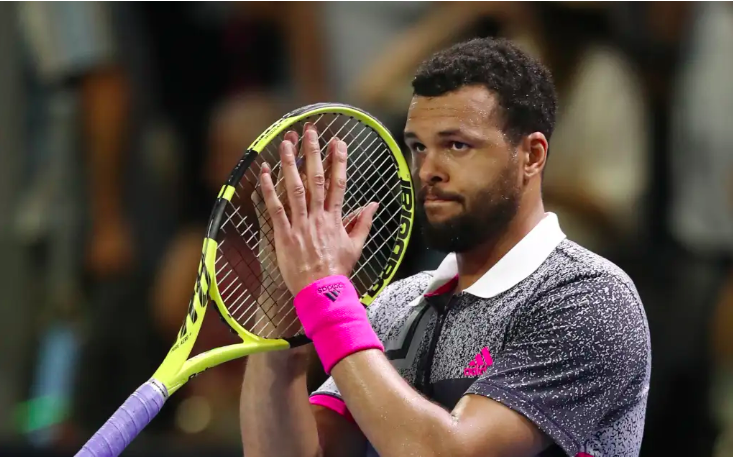
Jo-Wilfried Tsonga: The Electrifying French Showman of Tennis
Jo-Wilfried Tsonga, a charismatic presence on the tennis court, has captivated audiences with his dynamic play and magnetic personality. Hailing from France, Tsonga’s journey to the top of the tennis world is marked by his powerful serve, athleticism, and infectious enthusiasm.
Known for his thrilling performances and ability to dazzle crowds, Tsonga has become a beloved figure in the sport. This article explores the rise of Jo-Wilfried Tsonga, celebrating his achievements and the showmanship that has made him a standout in the world of tennis.
Early Life and Introduction to Tennis
Growing Up in Le Mans
Jo-Wilfried Tsonga was born on April 17, 1985, in Le Mans, France. Raised in a multicultural family, Tsonga’s father, Didier, was of Congolese descent, while his mother, Évelyne, hailed from France. This diverse background influenced Tsonga’s outlook on life and sport.
Discovering Tennis
Tsonga began playing tennis at a young age, showing promise and enthusiasm for the sport. His natural athleticism and competitive spirit were evident from the start. Encouraged by his parents, Tsonga pursued tennis with dedication and passion.
Rise to Professional Tennis
Turning Professional
Tsonga turned professional in 2004 at the age of 19. His early career was marked by a series of injuries that hindered his progress. Despite these setbacks, Tsonga’s resilience and determination propelled him forward.
Early Career Highlights
In 2008, Tsonga made a significant breakthrough by reaching the finals of the Australian Open. Although he lost to Novak Djokovic, this performance announced his arrival on the big stage and earned him widespread recognition.
Major Achievements
Australian Open 2008
Tsonga’s run to the final of the 2008 Australian Open was nothing short of spectacular. Along the way, he defeated top players such as Andy Murray and Rafael Nadal. His performance in this tournament showcased his potential to compete at the highest level.
Winning ATP Titles
Tsonga has won a total of 18 ATP singles titles and 4 doubles titles throughout his career. His victories span various surfaces, highlighting his versatility as a player. Notable titles include the Paris Masters in 2008 and the Canadian Open in 2014.
Davis Cup Success
Tsonga has been a crucial member of the French Davis Cup team, contributing to their success in the competition. His leadership and performances in Davis Cup matches have made him a respected figure among his peers.
Playing Style and Strengths
Powerful Serve and Forehand
Tsonga is renowned for his powerful serve and explosive forehand. These weapons allow him to dominate rallies and put pressure on his opponents. His aggressive style of play is both entertaining and effective.
Athleticism and Movement
Tsonga’s athleticism and movement on the court are key aspects of his game. His ability to chase down balls and recover quickly gives him an edge in long rallies. This physical prowess has been a hallmark of his career.
Charismatic Presence
Tsonga’s charismatic presence and engaging personality have endeared him to fans worldwide. His on-court celebrations and interactions with the crowd add an element of fun and excitement to his matches.
Impact on French Tennis
Inspiring Future Generations
Tsonga’s success has inspired a new generation of French tennis players. His journey from a young boy in Le Mans to an international tennis star serves as a source of motivation for aspiring athletes.
Role Model for Young Athletes
Tsonga’s work ethic, sportsmanship, and determination make him a role model for young athletes. His ability to overcome injuries and setbacks demonstrates the importance of resilience in achieving success.
Contributions Off the Court
Philanthropy and Charity Work
Tsonga is actively involved in philanthropy and charity work. He supports various causes, including children’s education and healthcare initiatives. His commitment to giving back to society reflects his compassionate nature.
Ambassador for Tennis
Tsonga has served as an ambassador for tennis, promoting the sport globally. He participates in exhibition matches, charity events, and youth programs, helping to raise the profile of tennis and inspire future generations of players.
Notable Rivalries and Matches
Clashes with Top Players
Tsonga has had notable rivalries with some of the best players in the world, including Roger Federer, Rafael Nadal, and Novak Djokovic. These matches are often intense and showcase Tsonga’s ability to compete at the highest level.
Memorable Matches
Some of Tsonga’s most memorable matches include his victory over Roger Federer in the quarterfinals of Wimbledon 2011 and his five-set thriller against Andy Murray at the 2016 Wimbledon. These matches highlight his talent, determination, and competitive spirit.
Retirement and Life After Tennis
Retirement Announcement
Tsonga announced his retirement from professional tennis in May 2022. His decision was influenced by recurring injuries and the physical toll of the sport. Fans celebrated his illustrious career and the many memorable moments he provided.
Post-Tennis Career
Since retiring, Tsonga has remained active in the tennis community. He has taken on roles in coaching, commentary, and various tennis-related initiatives. His insights and experience continue to benefit the sport.
Future Aspirations
Tsonga’s future aspirations include continuing to inspire young athletes and contributing to the growth of tennis globally. His commitment to the sport and his dedication to excellence ensure that his influence will endure long after his retirement.
Legacy and Influence
Enduring Impact on Tennis
Tsonga’s impact on tennis is enduring. His powerful game, charismatic presence, and sportsmanship have left an indelible mark on the sport. He is remembered as one of the greatest players of his generation and a true ambassador for tennis.
Role Model for Future Generations
Tsonga’s journey from a young boy in Le Mans to an international tennis star serves as an inspiration for future generations. His story emphasizes the importance of hard work, perseverance, and believing in oneself. He remains a role model for aspiring athletes around the world.
Conclusion
Jo-Wilfried Tsonga’s journey is a remarkable story of talent, determination, and success. His powerful serve, explosive forehand, and charismatic presence have made him one of the top players in men’s tennis. His contributions to the sport, both on and off the court, continue to inspire and motivate athletes and fans around the world. Tsonga’s legacy as the French Showman will undoubtedly endure, leaving an indelible mark on the world of tennis.
Frequently Asked Questions (FAQs)
How many Grand Slam titles has Jo-Wilfried Tsonga won?
Jo-Wilfried Tsonga has not won any Grand Slam titles. However, he reached the final of the Australian Open in 2008 and has made it to the semifinals of all four Grand Slam tournaments.
What is Jo-Wilfried Tsonga’s playing style?
Tsonga is known for his powerful serve and explosive forehand. His athleticism, movement, and aggressive style of play make him a challenging opponent on any surface.
How did Jo-Wilfried Tsonga contribute to the development of tennis in France?
Tsonga’s success on the international stage has inspired a new generation of French tennis players. His achievements have raised the profile of the sport in France and demonstrated that with hard work and dedication, great success is possible.
What philanthropic efforts has Jo-Wilfried Tsonga been involved in?
Tsonga supports various charitable causes, including children’s education and healthcare initiatives. His commitment to philanthropy reflects his generous and compassionate nature.
What were some of Jo-Wilfried Tsonga’s most memorable matches?
Some of Tsonga’s most memorable matches include his victory over Roger Federer in the quarterfinals of Wimbledon 2011 and his five-set thriller against Andy Murray at the 2016 Wimbledon. These matches showcased his talent, determination, and competitive spirit.
Tennis
Marion Bartoli: The Unyielding Spirit of French Tennis
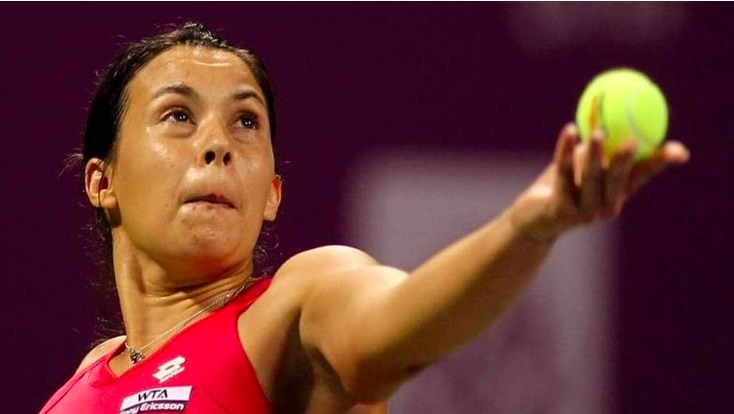
Marion Bartoli: The Unyielding Spirit of French Tennis
Marion Bartoli, a player who exemplified resilience and determination, has left an enduring mark on the world of tennis. With her unorthodox playing style and fierce competitive drive, Bartoli captured the hearts of fans worldwide. Rising from the ranks of French tennis, she defied the odds to claim her place among the sport’s elite.
Best known for her remarkable victory at Wimbledon in 2013, Bartoli’s career is a testament to hard work, perseverance, and an unyielding spirit. This article delves into the inspiring journey of Marion Bartoli, a true embodiment of French determination on the tennis court.
Early Life and Introduction to Tennis
Growing Up in France
Marion Bartoli was born on October 2, 1984, in Le Puy-en-Velay, France. Raised in a family that valued education and hard work, she was encouraged to pursue her interests passionately. Her father, Walter Bartoli, played a pivotal role in her development as a tennis player.
Discovering Tennis
Bartoli began playing tennis at the age of six. Her father, who was a medical doctor with no formal training in tennis, took it upon himself to coach her. This unconventional coaching relationship would become one of the defining aspects of her career.
Rise to Professional Tennis
Turning Professional
Bartoli turned professional in 2000 at the age of 16. Her early career was marked by rapid progress, thanks to her unorthodox playing style and relentless work ethic. She quickly made a name for herself on the WTA tour, demonstrating her potential to compete at the highest level.
Early Career Highlights
One of Bartoli’s first major breakthroughs came in 2007 when she reached the finals of Wimbledon. Although she lost to Venus Williams, this performance established her as a formidable player and a rising star in women’s tennis.
Major Achievements
Wimbledon 2013 Victory
Bartoli’s crowning achievement came in 2013 when she won Wimbledon. Her victory was a culmination of years of hard work and determination. She defeated Sabine Lisicki in the final, showcasing her unique style and mental fortitude.
Consistent Performances in Grand Slams
Throughout her career, Bartoli consistently performed well in Grand Slam tournaments. She reached the quarterfinals or better in all four majors, proving her ability to compete on the sport’s biggest stages.
Winning WTA Titles
Bartoli won a total of 8 WTA singles titles and 3 doubles titles over her career. These victories, along with numerous deep runs in major tournaments, solidified her status as one of the top players of her generation.
Playing Style and Strengths
Unorthodox Technique
Bartoli’s playing style was unlike any other on the tour. Her two-handed strokes on both sides and her distinctive service motion made her a challenging opponent. Her unique technique was a result of the innovative coaching methods employed by her father.
Mental Toughness
Bartoli’s mental toughness and determination were key aspects of her game. She was known for her ability to remain focused and composed under pressure, which often gave her an edge in tight matches.
Physical Fitness and Endurance
Despite dealing with various injuries throughout her career, Bartoli maintained a high level of physical fitness. Her endurance and ability to outlast opponents in long rallies were critical to her success.
Impact on French Tennis
Inspiring Future Generations
Bartoli’s success on the international stage had a significant impact on French tennis. She inspired a new generation of French players to pursue the sport and demonstrated that with dedication and innovation, great success is possible.
Role Model for Young Athletes
Bartoli’s journey from a small town in France to the pinnacle of tennis serves as an inspiration for young athletes around the world. Her story emphasizes the importance of hard work, perseverance, and believing in oneself.
Contributions Off the Court
Philanthropy and Charity Work
Bartoli has been actively involved in philanthropy throughout her career. She has supported various charitable causes, including health and education initiatives. Her commitment to giving back to society reflects her generous and compassionate nature.
Ambassador for Tennis
Bartoli has served as an ambassador for tennis, promoting the sport globally. She has participated in numerous exhibition matches, charity events, and youth programs, helping to raise the profile of tennis and inspire future generations of players.
Notable Rivalries and Matches
Clashes with Top Players
Bartoli has had notable rivalries with some of the best players in the world, including Venus Williams, Serena Williams, and Justine Henin. These matches were often intense and showcased her ability to compete at the highest level.
Memorable Matches
Some of Bartoli’s most memorable matches include her victory over Serena Williams at Wimbledon in 2011 and her triumph at Wimbledon in 2013. These matches highlighted her talent, determination, and competitive spirit.
Retirement and Life After Tennis
Retirement Announcement
Bartoli announced her retirement from professional tennis in August 2013, shortly after her Wimbledon victory. Her decision was influenced by recurring injuries and the physical toll of the sport. While her fans were saddened by her departure, they celebrated her illustrious career and the many memorable moments she provided.
Post-Tennis Career
Since retiring, Bartoli has remained active in the tennis community. She has taken on roles in coaching, commentary, and various tennis-related initiatives. Her insights and experience continue to benefit the sport.
Future Aspirations
Bartoli’s future aspirations include continuing to inspire young athletes and contributing to the growth of tennis globally. Her commitment to the sport and her dedication to excellence ensure that her influence will endure long after her retirement.
Legacy and Influence
Enduring Impact on Tennis
Bartoli’s impact on tennis is enduring. Her unique style, sportsmanship, and determination have left an indelible mark on the sport. She is remembered as one of the greatest players of her generation and a true ambassador for tennis.
Role Model for Future Generations
Bartoli’s journey from a young girl in France to a Wimbledon champion serves as an inspiration for future generations. Her story emphasizes the importance of hard work, perseverance, and believing in oneself. She remains a role model for aspiring athletes around the world.
Conclusion
Marion Bartoli’s journey is a remarkable story of talent, determination, and success. Her unique style, strong mental game, and physical endurance made her one of the top players in women’s tennis. Her contributions to the sport, both on and off the court, continue to inspire and motivate athletes and fans around the world. Bartoli’s legacy as the French Determination will undoubtedly endure, leaving an indelible mark on the world of tennis.
Frequently Asked Questions (FAQs)
How many Grand Slam titles has Marion Bartoli won?
Marion Bartoli won one Grand Slam title, at Wimbledon in 2013. This victory was the pinnacle of her career and showcased her unique style and mental fortitude.
What is Marion Bartoli’s playing style?
Bartoli is known for her unorthodox playing style, which includes two-handed strokes on both sides and a distinctive service motion. Her unique technique, developed by her father, made her a challenging opponent.
How did Marion Bartoli contribute to the development of tennis in France?
Bartoli’s success on the international stage inspired a new generation of French players to pursue tennis. Her achievements raised the profile of the sport in France and demonstrated that with hard work and dedication, great success is possible.
What philanthropic efforts has Marion Bartoli been involved in?
Bartoli has supported various charitable causes, including health and education initiatives. Her commitment to philanthropy reflects her generous and compassionate nature.
What were some of Marion Bartoli’s most memorable matches?
Some of Bartoli’s most memorable matches include her victory over Serena Williams at Wimbledon in 2011 and her triumph at Wimbledon in 2013. These matches showcased her talent, determination, and competitive spirit.
-

 NBA4 months ago
NBA4 months agoLaMelo Ball Net Worth: A Comprehensive Look at the NBA Star’s Financial Empire
-
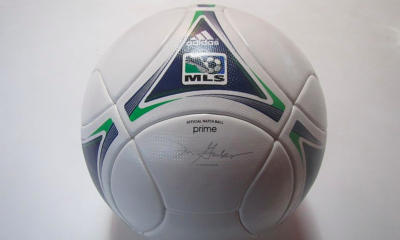
 Football6 months ago
Football6 months agoMeet the World Football Celebrities and Their Stories
-

 Football5 months ago
Football5 months agoEuro 2024: Alvaro Morata Speaks Out About ‘No Respect’ in Spain
-

 Game5 months ago
Game5 months agoThe Ultimate Guide to General Multi-Sport Events
-

 Football5 months ago
Football5 months agoRonaldo’s Business Ventures and Investments (CR7 Brand)
-

 Football5 months ago
Football5 months agoEuro 2024 Power Rankings: Spain Remains Dominant Ahead of Semifinals
-

 Wrestling2 months ago
Wrestling2 months agoJey Uso Biography and Net Worth: The Rise of a WWE Superstar
-

 Sports6 months ago
Sports6 months agoPele: The Legendary Journey of Football’s Greatest Icon | The Immortal King of Football



